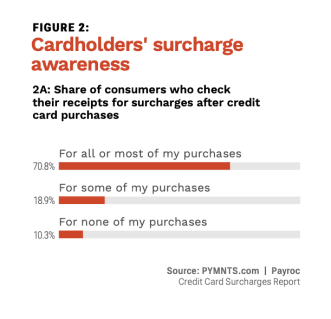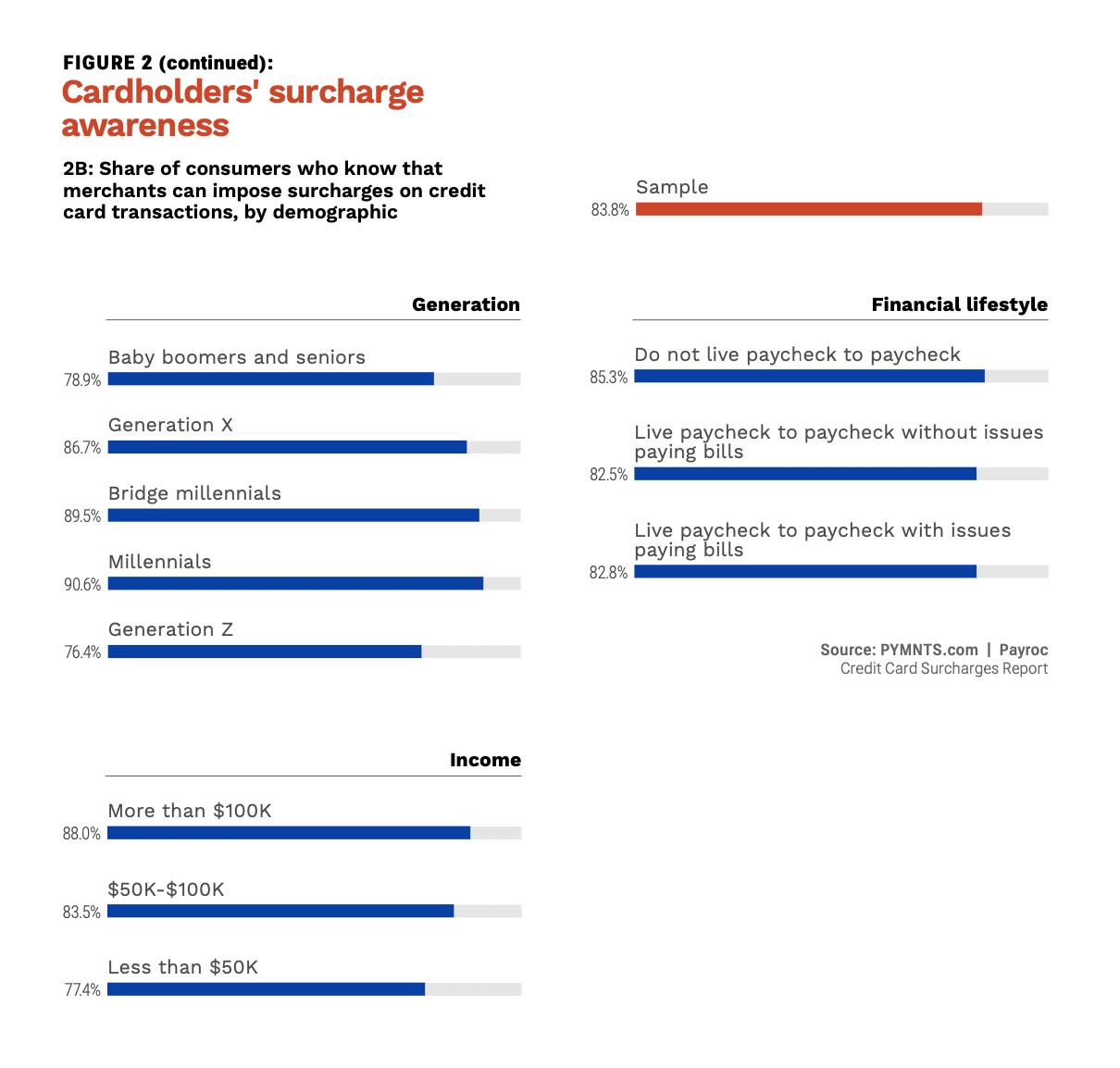
An average of 9% of cardholders were asked to pay a surcharge of their most recent credit card purchase at restaurants or retail stores, according to Credit Card Surcharges, a PYMNTS and Payroc collaboration that surveyed 2,507 U.S. credit card users.
Get the report: Credit Card Surcharges: How Cardholders React To Extra Costs
Cardholders’ overall awareness of merchant surcharges is high, with 84% of cardholders knowing that merchants can charge fees for processing.

What’s more, 90% of cardholders examine their receipts from merchants for surcharges on some, most or all of their credit card purchases. Seventy-one percent of cardholders check their receipts for surcharges after all or most of their credit card purchases, and another 19% do so for some of their purchases.
Cardholders’ awareness of credit card surcharges is high across each financial lifestyle, income level and age group covered in the survey. Millennials and bridge millennials are the generations with the largest share of awareness among the generations. Cardholders who earn more than $100,000 per year have the greatest awareness among income groups. There is little variation in the awareness of card surcharges among the three financial lifestyles tracked in the survey.

Twenty-one percent of cardholders say that having to pay a surcharge negatively impacted their view of the merchant that made them pay that surcharge.
In addition, 56% of cardholders who had to pay a surcharge during their most recent purchases say they would be “very” or “extremely” likely to switch to another merchant if asked to pay one again.
Still, 85% of cardholders who are presented with surcharges agree to pay them.
Consumers have frequently used a different payment method specifically to avoid paying a surcharge. There are several payment methods they use as credit card alternatives to get around surcharges, with 71% of cardholders using cash, 40% using debit cards, 22% using PayPay, 19% using digital wallets and 19% using checks.
